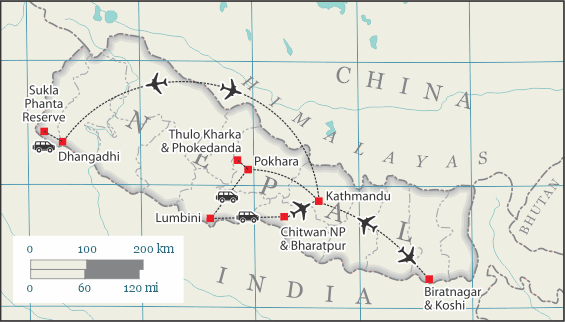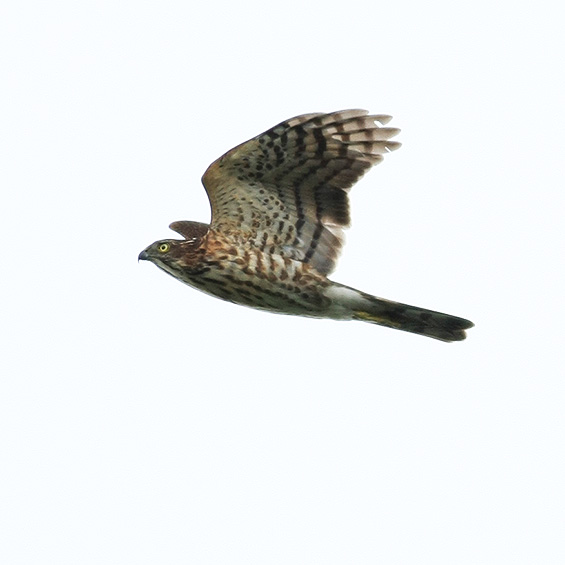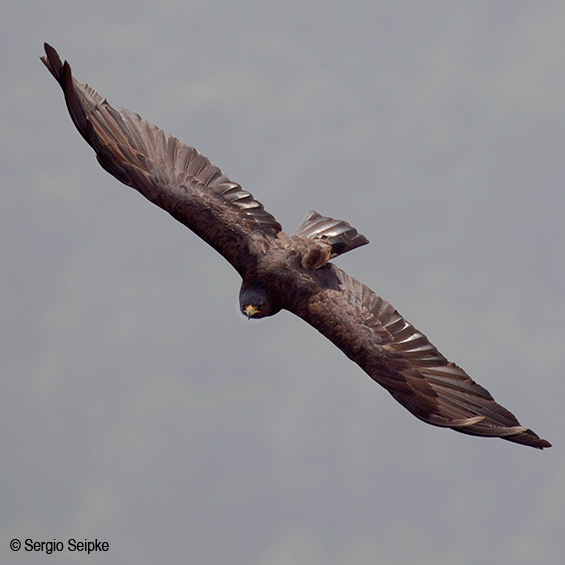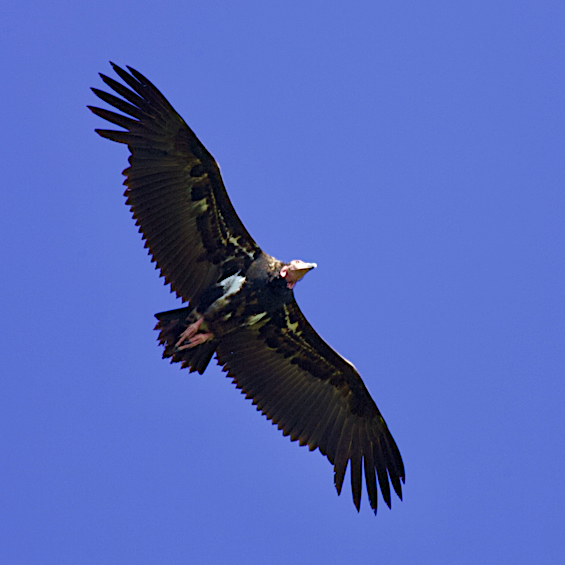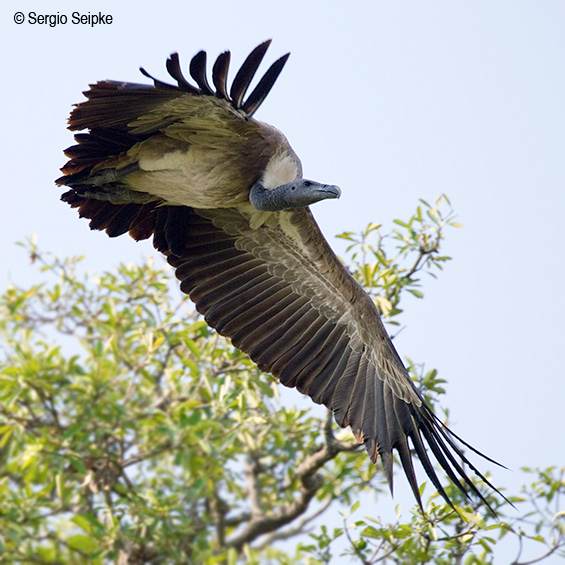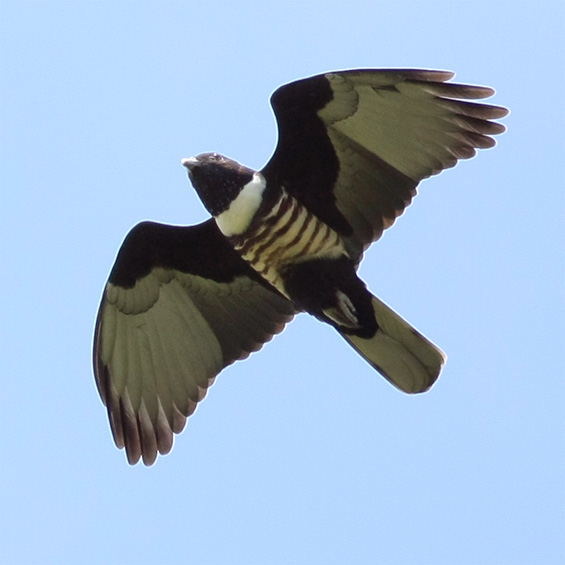Lowlands of Nepal Raptor Tour
Lowlands of Nepal Raptor Tour
Share this!
The bird-rich, high-productivity grasslands, cultivation fields, and sal forests in the lowlands of Nepal, at the foothills of the mighty Himalayas, are a wintering paradise for a host of Palearctic bird species, including many raptors. Many species gather in good numbers at selected locations. For years we have scouted these locations and this tour is the distilled result of this effort. We have designed this tour to target some 400 species of birds, including 45+ raptor species. Many charismatic mammals can be seen as well including One-horned Rhino, Swamp Deer, …and we’ll also take a chance on Leopards and Bengal Tiger! This 17-day tour will be conducted at a leisure pace with lots of time to watch individual birds, and observed bird and mammal behavior.
Four Spectacular Destinations
We will focus on four excellent birding destinations in the lowlands of Nepal: Koshi Tappu Wildlife Reserve, Chitwan National Park, Lumbini Fields, and Suklapahanta National Park. Since the tour starts and ends in Kathmandu, we’ll take the opportunity to pay a full day visit to Pulchowki Hill, to target some of its great birds and take in the fantastic views of the Himalayas and the vibrant valleys below.
Kathmandu and Phulchoki Mountain
Phulchoki Mountain, the highest peak on the rim of the Kathmandu Valley, lies 16 km southeast of Kathmandu. Nearly 290 species of birds have been recorded here, including the range-restricted Spiny Babbler. The summit (2700 m) affords fantastic views of the Himalayas, from Annapurna (7,937 m), Manaslu (8,163 m), Ganesh I (7,422 m), and Gaurishankar (7,134 m), as far to Mount Everest (8,849 m), the highest mountain on Earth! Raptorial highlights here include Besra, Crested Serpent Eagle, Bonelli’s, Steppe, and Indian Black Eagle, Mountain Hawk-Eagle, Long-legged, and Upland Buzzards, and Himalayan Vulture. Other birds of interest: Himalayan Cutia, Kalij Pheasant, Fire-tailed Myzornis, Long-tailed Broadbill, and Large Niltava.
Koshi Tappu Wildlife Reserve, Patnali Forest, and Koshi Riverbank
The Koshi Tappu Wildlife Reserve is situated in the southeastern corner of Nepal, close to the country's border with India. It is Nepal's smallest wildlife reserve covering 175 square kilometers, but over 525 species of birds have been recorded here. A kilometer-long barrage that spans over the Koshi River was built to prevent flooding in the plains of northern India, to the south. The vast expanse of open water created by the Koshi River, marshes, lagoons, sandbanks, mudflats and arable land that lie around represent outstanding wetland habitat, and one of the finest birdwatching sites in Asia. Raptor highlights here include Marsh, Hen, Pied, and Pallid Harriers, White-eyed Buzzard, Pallas’s Fish-Eagle, Steppe, Greater Spotted, Indian Spotted, and Imperial Eagles, Crested Serpent Eagle, Long-legged Buzzard, Common and Lesser Kestrels, and Red-necked and Peregrine Falcons. Other birds of interest: Swamp Francolin, and Bengal Florican. We should see roughly 100 species of birds each day spent here. Mammals occurring in the reserve: Wild Water Buffalo, Asian Elephant, Fishing Cat, Jungle Cat, Golden Jackal, Hog Deer, Wild Boar, Spotted Deer, and Nilgai–the subcontinent's largest antelope.
On the Koshi riverbank, and about one hour drive from the reserve, lies the Patnali Forest. Some forest raptors occurring here include Black, and Jerdon’s Bazas, Eurasian Sparrowhawk, Besra, Crested, and Northern Goshawks, and Collared Falconets. Noteworthy non-raptorial birds: Pied Hornbill, and Abbott’s Babbler. This is a good area to spot Bengal Fox and Large Gray Mongoose.
Chitwan National Park
With 932 square kilometers of grasslands, Sal, and riverine forests and over 540 species of birds recorded, Chitwan National Park ranks high among the top birding destinations in Nepal. Raptorial highlights here include Crested Honey Buzzard, Crested Serpent Eagle, Gray-headed Fish Eagle, Booted Eagle, Changeable Hawk-Eagle, and Eurasian Hobby. Other birds of interest: Great Hornbill, Bengal Florican, Slender-billed Babbler, and Gray-crowned Prinia, among many others. Some 50 species of mammals occur in Chitwan NP, including One-horned Rhino, Asian Elephant, Wild Boar, Asiatic Wild Dog, Jungle Cat, Golden Jackal, Sambar, Muntjac, Spotted, and Hog Deer, Rhesus, and Langur Monkeys, Sloth Bear, and Leopard and Bengal Tiger. Reptilian highlights include Marsh Mugger and Gharial.
Lumbini Fields
Some 350 species of birds occur here including Crested Honey Buzzard, White-eyed Buzzard, Western Marsh, Hen, and Pied Harriers, Indian Spotted, Greater Spotted, Steppe, and Tawny Eagles, plus seven species of vultures. Sarus Cranes breed in the vicinity. Mammals include Nilgai, Wild Boar, Golden Jackal, Jungle Cat, Bengal Fox, Spotted, and Hog Deer, and Flying Fox.
Suklaphanta National Park
This 305-square kilometer National Park is located in the far southwestern corner of Nepal. It boast of the richest, most extensive grasslands in Asia, and is home to 445 species of birds including Slender-billed Vulture (breeding), plus White-rumped, and Red-headed Vultures, all three of them Critically Endangered, in addition to Grey-headed Fish Eagle, Western Marsh, Hen, and Pied Harriers, White-eyed Buzzard, Indian Black, Booted, Bonelli’s, and Rufous-bellied Eagles, Changeable Hawk-Eagle, Himalayan, and Long-legged Buzzards, plus Red-necked and Peregrine Falcons. Non-raptorial specialties: Swamp Francolin, Great Slaty Woodpecker (one of the largest of the world’s woodpeckers), White-naped Woodpecker, Indian Grassbird, Finn's Weaver, and White-throated Bushchat. Some 30 species of mammals include Swamp Deer (largest herds in the world have been recorded here), Asian Elephant, One-horned Rhino, Spotted, Hog, and Barking Deer, Wild Boar, Hispid Hare, Nigali, Smooth Coated Otter. Rarely seen but spectacular Leopard and Bengal Tiger also occur here.
Make A Difference!
Raptours®, L.L.C. makes financial contributions to Hawk Mountain Sanctuary for every member that signs up for this tour.
Raptours®, L.L.C helps support hands-on basic raptor research and conservation work led by Nepal Raptor Tour leader Dheeraj Chaudhary. His efforts are broadening our understanding of little known species such as the Indian Spotted Eagle (VU).
Join us on this tour and become a proud supporter of raptor conservation where it is most needed!
DAY-BY-DAY ITINERARY
Day 1
1 February
Arrive in Kathmandu at Tribhuvan International Airport (IATA code: KTM). Transfer to Hotel. Dinner and overnight in Kathmandu.
Day 2
2 February
Breakfast at the hotel and drive to Phulchoki Mountain, then slowly walking downhill birding along the way. Picnic lunch. Overnight and dinner at the hotel in Kathmandu.
Day 3
3 February
Breakfast and checkout. Transfer to the airport in Kathmandu and fly to Biratnagar (40 min). Birding around the Barju Lake, near the airport. This is one of the best places to see many species of birds including harriers, vultures, eagles, buzzards, accipiters, and falcons. Picnic lunch while birding on the lake. Transfer to the Koshi Wildlife Camp (KWC, 1h 30min). Dinner and overnight at the Camp.
Day 4
4 February
Breakfast at the camp. Then head out to the reserve on AWD vehicles to target many raptors species and other birds. We will have a chance to see the endangered Wild Water Buffalo in the reserve. Hot lunch at the camp. Siesta break. Afternoon drive to Koshi barrage. Here we will target several species of vultures, harriers, accipiters, eagles, buzzards, and falcons, in addition to other birds. The endangered Gangetic River Dolphins are regularly seen here. Dinner and overnight at the KWC.
Day 5
5 February
Breakfast at the camp. Drive to Patnali Forest IBA along the Koshi river bank. We will look for Jerdon’s Baza, Black Baza, Short-toed Snake-Eagle, Crested Goshawk, several species of falcons and Collared Falconet, in addition to many species of birds. Picnic lunch. Dinner and overnight at the Camp.
Day 6
6 February
Another day exploring the wonderful Koshi Tappu Wildlife Reserve to target raptors not seen so far, and other birds of interest. Picnic lunch. Dinner and overnight at the Camp.
Day 7
7 February
Breakfast and check-out. Mostly a driving day (10 hs) with stops at selected places to target raptors and eat lunch. We’ll look for Ibisbill at the Rapti river. Check in the hotel late in the afternoon. Overnight at the Hotel.
Day 8
8 February
Breakfast, then walk in the community forest to target raptors and other species of birds. Lunch at the hotel. Siesta break. Boat ride on the Rapti river in the afternoon. Dinner and overnight at the hotel.
Day 9
9 February
Breakfast, then leave on AWD vehicles to spend all day in Chitwan NP targeting raptors including Gray-headed Fish Eagle, Changeable Hawk-Eagle, and Collared Falconet, plus many other birds, and mammals. Mammals likely to be seen include Dusky Langur, Rhesus Macaque, Hog Deer, Spotted Deer, Wild Boar, and One-horned Rhino. Both Sloth Bear and Bengal Tiger are possible but rare! Picnic lunch in the park. Dinner and overnight at the hotel.
Day 10
10 February
Breakfast and checkout, then drive to a vulture restaurant in Nawalpur (2:30 hs) spend a couple of hours observing the vultures feeding. Hot lunch in the homestay located nearby, or picnic lunch brought from the hotel (TBD). Drive to Lumbini in the afternoon. Check in at the Lumbini Buddha Garden Lodge late in the afternoon. Dinner and overnight at the LBG.
Day 11
11 February
Breakfast. Then explore the grasslands and cultivation field in the area to target several species of harriers, including Pied Harrier, also White-eyed Buzzard, and Indian Spotted Eagle. Lunch and dinner at the LBG.
Day 12
12 February
Breakfast, then go to a nesting site of Indian Spotted Eagles nesting site. Also likely to be seen are Black-winged Kite, Egyptian Vulture, White-backed Vulture, Himalayan Vulture, Griffon Vulture, Western Marsh Harrier, and White-eyed Buzzard. Lunch at the hotel. Visit the birthplace of Buddha in the afternoon, and bird the lagoon and reed beds nearby. Dinner and overnight at the LBG.
Day 13
13 February
Breakfast and checkout. Head for the airport to fly to Dhangadi (via Kathmandu). Transfer to Suklaphanta Wildlife Camp, and check in. Dinner and overnight at the SWC.
Days 14-16
14-16 February
Early breakfast. Then leave with box lunch for Suklaphanta National Park on AWD vehicles. Our main raptor target here is Slender-billed Vulture, of which we should see several every day. We will also invest time looking for Bengal Tigers and Leopards, both present in the National Park. Swamp Deer, Sambur, Spotted Deer, and Golden Jackal can be seen too. Then a short nap and back to searching for game. 6.00 pm, arrive at SWC. 7.00 pm, dinner. Overnight at the SWC.
Day 17
17 February
Breakfast and checkout. Transfer to the airport in Dhangadi. Fly back to Kathmandu and Transfer to Tribhuvan International Airport (IATA code: KTM) where the tour ends at noon. Catch flights back home in the evening.
(Extra nights in Kathmandu can be arranged upon request at additional cost.)
common name
- Osprey (LC)
- Black-winged Kite (LC)
- Egyptian Vulture (EN)
- Crested Honey Buzzard (LC)
- Black Baza (LC)
- Jerdon’s Baza (LC)
- White-rumped Vulture (CR)
- Slender-billed Vulture (CR)
- Himalayan Vulture (NT)
- Griffon Vulture (LC)
- Red-headed Vulture (CR)
- Cinereous Vulture (NT)
- Crested Serpent Eagle (LC)
- Short-toed Snake-Eagle
- Changeable Hawk-Eagle (LC)
- Mountain Hawk-Eagle (LC)
- Black Eagle (LC)
- Indian Spotted Eagle (VU)
- Greater Spotted Eagle (VU)
- Booted Eagle (LC)
- Steppe Eagle (EN)
- Eastern Imperial Eagle (VU)
- Bonelli’s Eagle (LC)
- Crested Goshawk (LC)
- Shikra (LC)
- Besra (LC)
- Eurasian Sparrowhawk (LC)
- Northern Goshawk (LC)
- Western Marsh Harrier (LC)
- Hen Harrier (LC)
- Pallid Harrier (NT)
- Pied Harrier (LC)
- Black Kite (LC)
- Brahminy Kite (LC)
- Pallas's Fish Eagle (EN)
- Grey-headed Fish Eagle (NT)
- Lesser Fish Eagle (NT)
- White-eyed Buzzard (LC)
- Himalayan Buzzard (LC)
- Long-legged Buzzard (LC)
- Collared Falconet (LC)
- Lesser Kestrel (LC)
- Common Kestrel (LC)
- Red-necked Falcon (NT)
- Amur Falcon (LC)
- Eurasian Hobby (LC)
- Peregrine Falcon (LC)
latin name
- Pandion haliaetus
- Elanus caeruleus
- Neophron percnopterus
- Pernis ptilorhynchus
- Aviceda leuphotes
- Aviceda jerdoni
- Gyps bengalensis
- Gyps tenuirostris
- Gyps himalayensis
- Gyps fulvus
- Sarcogyps calvus
- Aegypius monachus
- Spilornis cheela
- Circaetus gallicus
- Nisaetus cirrhatus
- Nisaetus nipalensis
- Ictinaetus malaiensis
- Clanga hastata
- Clanga clanga
- Hieraaetus pennatus
- Aquila nipalensis
- Aquila heliaca
- Aquila fasciata
- Lophospiza trivirgata
- Tachyspiza badia
- Tachyspiza virgata
- Accipiter nisus
- Astur gentilis
- Circus aeruginosus
- Circus cyaneus
- Circus macrourus
- Circus melanoleucos
- Milvus migrans
- Haliastur indus
- Haliaeetus leucoryphus
- Haliaeetus humilis
- Haliaeetus ichthyaetus
- Butastur teesa
- Buteo burmanicus
- Buteo rufinus
- Microhierax caerulescens
- Falco naumanni
- Falco tinnunculus
- Falco chicquera
- Falco amurensis
- Falco subbuteo
- Falco peregrinus
Suggested Field Guides
Grimmett, R., T. Inskipp, and C. Inskipp. 2000. Birds of Nepal. Helm Field Guides.
Ferguson-Lees, J., and D.A. Christie. 2005. Raptors of the World. Paperback Edition. Princeton University Press, New Jersey.
Need to Know
Tour Dates
1 - 17 February 2024
Booking Closes On
1 January 2024
Spaces Available
6
Group Size Limits
Small Group: 2-6 participants
Guide-to-participant ratio 1:6 or better
Tour Price
Tour price is $6,900 and includes hotels (double occupancy), meals, soft drinks, entry fees, ground transportation, all domestic flights, and guide fees.
International flights, Nepal entrance visa, extra nights in Kathmandu, alcoholic beverages, items of personal nature, tips, laundry, and insurance of any kind are not included.
Single Supplement
$1100
Single rooms will be subject to availability.
Roommates will be assigned to those participants willing to share a room. If a roommate is not available, you will be required to pay the single supplement.
Country Entry Requirements
All foreigners, except Indians, must have a visa. You can apply for one in advance, or get one upon arrival at Tribhuvan International Airport in Kathmandu. The visa application process upon arrival takes about one hour. A valid passport is required. A single-entry visa valid for up to 30 days costs $50.
Difficulty
Easy
No streneous walks of hikes.
Comfort
Basic to Excellent
Hotel Royal Singi in Kathmandu is a non-smoking hotel with a bar, restaurant, free high speed internet, buffet breakfast and airport transportation. It is conveniently located within a 10-minute walk from downtown Thamel. Rooms have private bathrooms, safe box, mini bar, and wi-fi access.
While definerly not luxury glamping facilities, both the Koshi Tappu Wildlife Camp and the Suklaphanta Wildlife Camp are comfortable-enough bases to make wildlife watching in the nearby reserves fully enjoyable. These are tented camps. Meals are served in the main bulding.
The Temple Tree Resort is rated at 4 stars. Rooms are very comfortable, have a minibar, and microwave oven and coffee maker. Private bathrooms with hot shower and hair dryer. Swimming pool, two in-house restaurants and food patio.
The Lumbini Buddha Garden Resort is rated at 3 stars, with ample gardens which offer good birding. Laundry available. Meals are either à la carte or buffet.
The Jungle Villa Resort is located in two hectares of vibrant forestland with mature gardens by the bank of the Rapti river at the northern fringe of Chitwan National Park.
Weather & Clothing
Kathmandu is the coldest stop in our journey, where average lows in February reach 42 °F (5 °C), and average highs reach 69 °F (20 °C). Lower locations in the Terai will be warmer with averange highs of 84 °F (29 °C) and average lows of 57 °F (14 °C). We expect mostly (65-75%) sunny days, with a daily chance of precipitation ranging 5-10% on any given day.
Full-day outings imply a greater range of temperatures throughout the day. Be prepared to wear at least three layers of clothing at times, as early mornings can be chilly but temperature rises quickly later. Good, breathable, comfortable (broken in!), footwear, such as quality hiking boots, is recommended.
Health
Some travel vaccines and malaria prophylaxis are advisable | Proof of yellow fever vaccination may be required
There is no risk of yellow fever in Nepal. The government of Nepal requires proof of yellow fever vaccination only if you are arriving from a country with risk of yellow fever.
Malaria is present throughout Nepal in areas <2,000 m. Drug resistance to Chloroquine has been documented.
For detailed information on health precautions, anti‑malarial medication, and vaccines recommended for Nepal, visit CDC’s website 6 weeks before departure.
Local Currency
Nepalese rupee
Local currency is the Nepalese rupee, and exchange rate is roughly 125 Nepalese rupees for U.S. dollar. ATMs are readily available in Kathmandu, Pokhara, and Bharatpur. Travelers’ checks and cash can be exchanged in Kathmandu.
Tour Map
Tour Leader
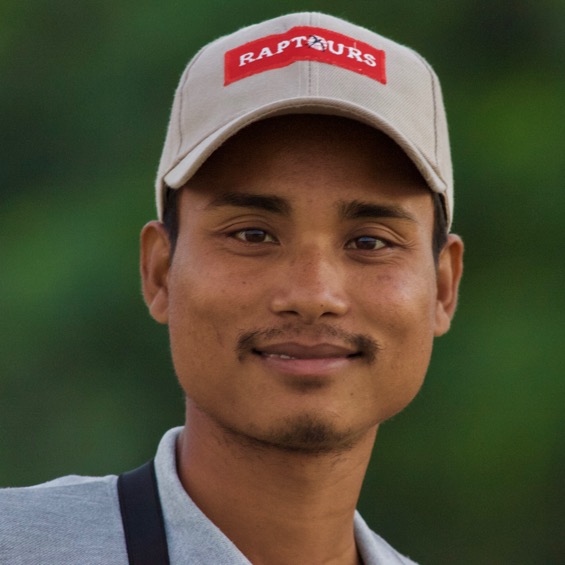
Tour Showcase
Terms
Raptours, L.L.C. reserves the right to alter this itinerary as necessary, or to cancel the tour prior to departure, with full refund to participants.
Raptours, L.L.C. or its agents may decline to accept or retain any person as a member of this tour at any time.
No smoking will be permitted while with the group, either when indoors or in the field.
Travel medical insurance is strongly recommended.
All passengers will be required to sign a hard copy of the Release of Liability and Assumption of Risk form upon meeting with the tour leader in Kathmandu.
No participants will be allowed in the group without a signed copy of the Release of Liability and Assumption of Risk form.
Release of Liability and Assumption of Risk Form
(including Terms)
![]()


